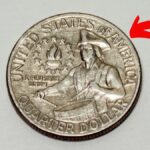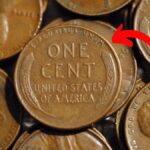The Lincoln Wheat Penny, an iconic piece of American numismatic history, continues to capture the imagination of coin collectors and enthusiasts worldwide. With some rare specimens valued as high as $730,000, these pennies hold both monetary and historical significance. Let’s delve into what makes this humble coin so valuable and why it’s still a topic of fascination.
The Origins of the Lincoln Wheat Penny
Introduced in 1909, the Lincoln Wheat Penny was the first U.S. coin to feature a portrait of an American president. Designed by Victor David Brenner, the coin was released to commemorate the 100th birthday of Abraham Lincoln. Its reverse side featured two stalks of wheat, symbolizing prosperity and abundance.
The coin remained in production until 1958, after which it was replaced by the Lincoln Memorial reverse design.
What Makes the Lincoln Wheat Penny Valuable?
Several factors contribute to the high value of certain Lincoln Wheat Pennies:
- Rarity: Specific years and minting errors have resulted in limited quantities of some coins, making them rare and highly sought after.
- Mint Marks: Coins minted in San Francisco (marked “S”) or Denver (marked “D”) are often rarer than those from Philadelphia, which lack a mint mark.
- Condition: Pennies in uncirculated or pristine condition fetch higher prices than those with wear and tear.
- Errors and Variations: Misprints or anomalies, such as double-die errors, can significantly increase a coin’s value.
The $730,000 Lincoln Wheat Penny
The Lincoln Wheat Penny valued at $730,000 is a rare 1943 coin made from bronze instead of the standard zinc-coated steel. During World War II, the U.S. Mint switched to steel for pennies to conserve copper for the war effort. However, a small number of bronze blanks were mistakenly used, resulting in a highly rare and valuable error coin.
Key Features of the 1943 Bronze Penny
- Material: Composed of 95% copper and 5% zinc and tin, unlike the steel pennies of the same year.
- Weight: Heavier than the steel version.
- Magnetism: Unlike steel pennies, the bronze version is non-magnetic.
These characteristics make the 1943 bronze penny a collector’s dream, and its rarity has driven its value to extraordinary heights.
How to Identify Valuable Lincoln Wheat Pennies
If you’re interested in determining whether you own a valuable Lincoln Wheat Penny, consider the following:
- Check the Date and Mint Mark: Look for key years such as 1909-S VDB, 1914-D, and 1943 bronze pennies.
- Inspect for Errors: Double-die errors, off-center strikes, or unusual designs can increase value.
- Evaluate the Condition: Coins with sharp details and minimal wear are worth more.
- Seek Professional Appraisal: If you suspect you have a valuable penny, consult a numismatist or send it to a grading service for evaluation.
Why Are Lincoln Wheat Pennies Still Circulating?
Despite their age, Lincoln Wheat Pennies are still occasionally found in circulation. This is due to the sheer volume of these coins produced during their run—billions were minted. Many people overlook them, unaware of their potential value, which means some gems are still out there waiting to be discovered.
The Appeal of Lincoln Wheat Pennies
Lincoln Wheat Pennies hold a special place in American culture and history. They serve as a reminder of a simpler time and are a gateway for many into the world of coin collecting. The prospect of finding a rare penny worth thousands, or even hundreds of thousands of dollars, keeps the excitement alive for collectors and casual enthusiasts alike.
Conclusion
The Lincoln Wheat Penny, particularly the rare 1943 bronze version valued at $730,000, is a testament to the rich history of U.S. coinage. While most pennies may seem insignificant, this iconic coin proves that treasures can sometimes be hiding in plain sight. Whether you’re a seasoned collector or just starting, checking your spare change might lead to an exciting discovery.
Disclaimer: The prices mentioned for rare coins, including the Lincoln Wheat Penny, are not guaranteed and may not be entirely accurate due to market fluctuations and varying appraisals.




